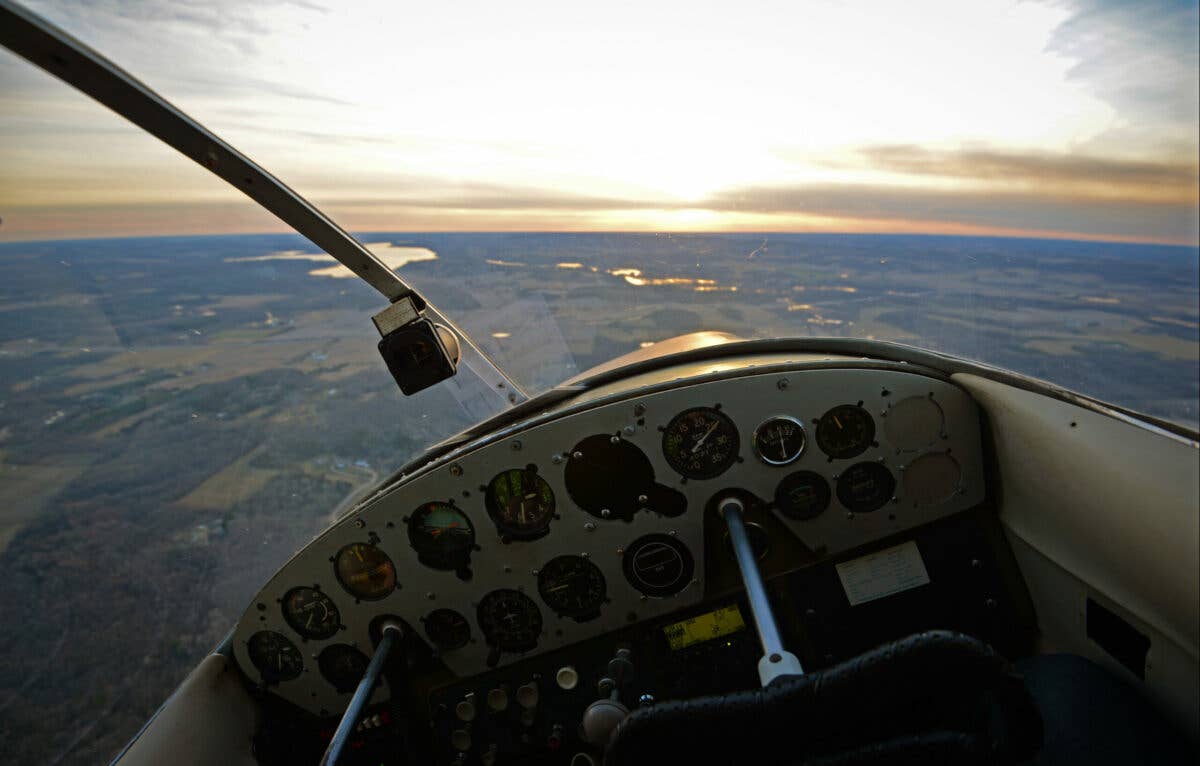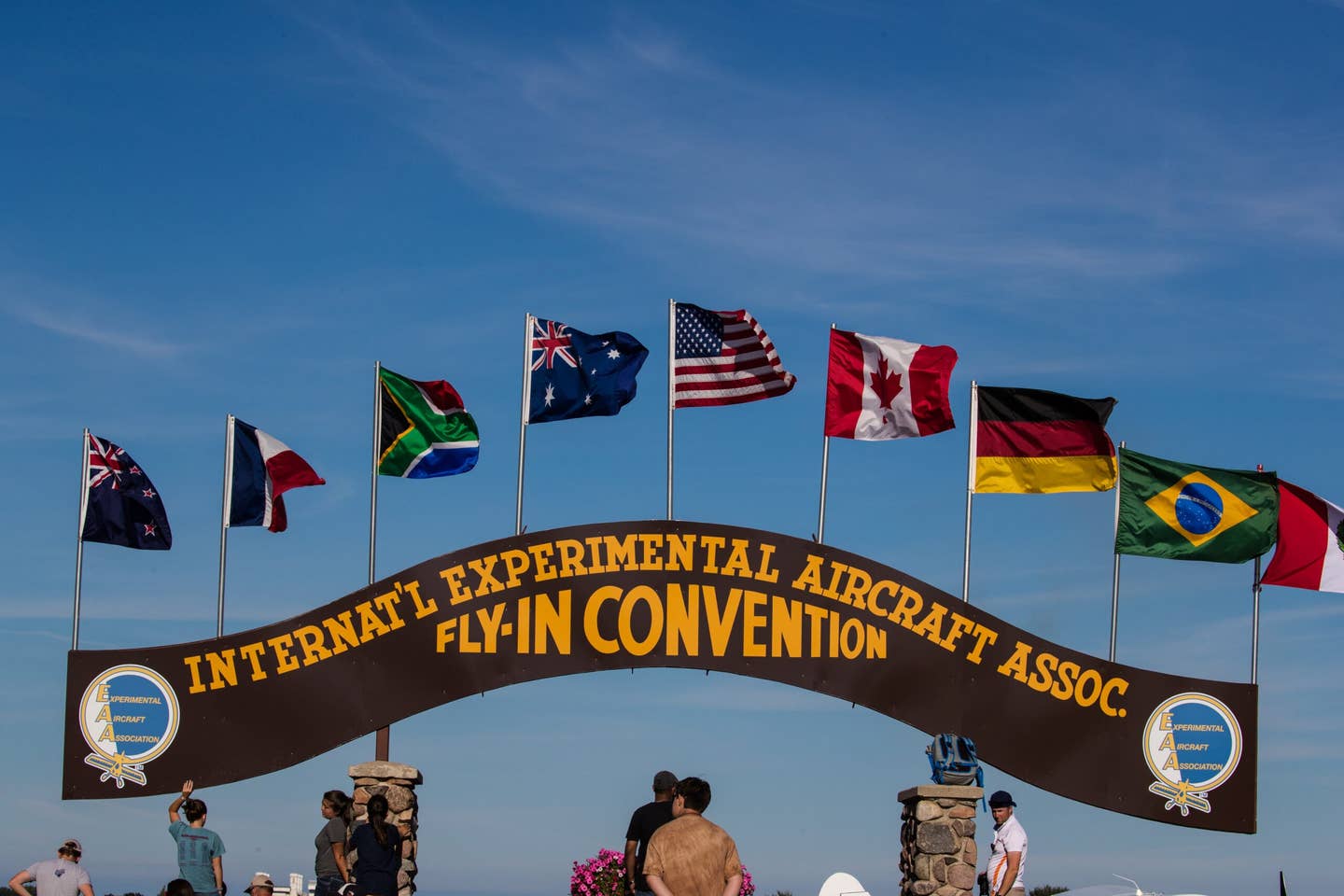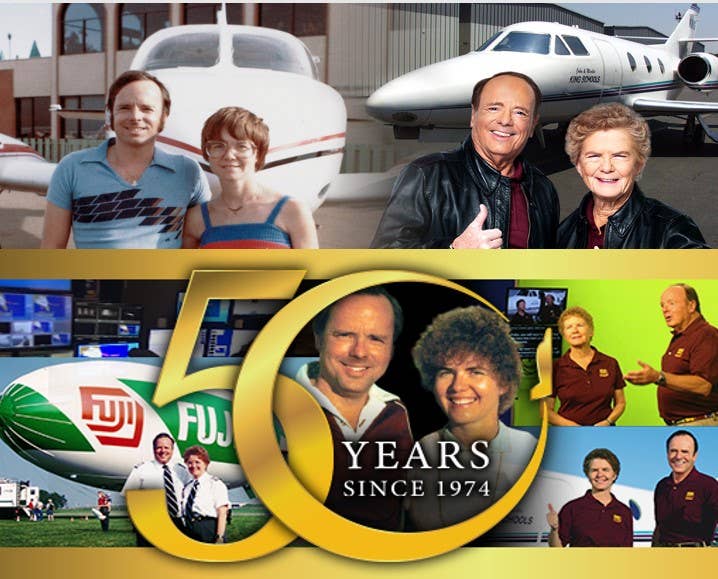What You Need to Know Before Flying Into Sun ‘n Fun
Pilots should study the FAA’s Notice to Air Missions (NOTAM) prior to departure.

The FAA predicts nearly 2,000 pilots are headed to Sun ‘n Fun this year. [Credit: Jason McDowell]
If you are planning to fly yourself to Lakeland, Florida, for the annual Sun 'n Fun Aerospace Expo, make sure you study the notice to air missions (NOTAM) prior to departure. There have been several changes from previous years, and you don't want to be the pilot who does something silly, unexpected, and potentially dangerous.
The FAA, which predicts nearly 2,000 pilots are headed to Sun 'n Fun (SNF), has published a NOTAM for the event, effective Monday, April 8, to Sunday, April 14, for the duration of the event.
- READ MORE: 5 Things to Look Forward to at 2024 Sun 'n Fun Aerospace Expo
Pilots should read the NOTAM in its entirety, but these are some areas the FAA has called out this year:
VFR Procedures
There are multiple VFR procedures for Sun 'n Fun arrivals, and they vary depending on the type of aircraft, such as warbirds, ultralights, or aircraft without radios (NORDO), so read the NOTAM carefully.
Contacting Flight Service by Radio
- On initial call-up, advise flight service of your full aircraft identification and which frequency you are using.
- When transmitting on 122.1 and listening to the VOR, check that volume is up.
- Due to frequency congestion, air files and in-flight full route weather briefings are discouraged.
Tips for Enroute
Pilots should acquire the ATIS no later than 60 miles from Lakeland Linder International Airport (KLAL), noting the arrival runway in use. Follow the published NOTAM procedures for your type of aircraft.
Pilots are requested to have their landing lights on for extra visibility when they are within 40 nm of KLAL and make sure their transponder remains on during the approach. ATC will contact pilots in the vicinity of Lake Parker’s north shore, using the aircraft “color” and “type” to provide sequencing and other arrival information. When you file your flight plan, make sure to include these.
Pilots will likely be asked to rock their wings in acknowledgment of instructions. Do not transmit unless requested by ATC or if you have an emergency. ATC at Lake Parker controls traffic flow and assigns the KLAL landing runway.
Pilots are cautioned to pick out an aircraft of similar type and speed to follow and remain at least a half mile in trail behind it. Aircraft should not be overtaken nor should the pilots perform S-turns to follow another aircraft. Instead break off the procedure and proceed to the starting point and follow another aircraft of similar speed.
Pilots are encouraged to add at least 30 minutes to their expected time en route with a corresponding fuel load in the event they are required to hold, go around, or divert to an alternate.
All aircraft maintain 100 knots, at 1,200 feet msl.
Aircraft unable to safely slow to this speed should maintain 150 knots at 1,700 msl, with the exception of twin-engine aircraft that should be at an altitude of 2,200 msl.
Pilots should land on either the green or orange dot, per ATC instructions.
Be alert for special event traffic and flyby aircraft using the main runway with opposite-direction base leg entries.
Do not deviate south of Runway 10R/28L in the event of a go-around.
Do not land on the main (wide) Runway 10R/28L unless specifically instructed by ATC.
Do not stop on the runway. High-speed taxi to the end of the runway or follow ATC instructions.
Pilots are asked to close flight plans while airborne.
Due to the large number of aircraft, you may encounter up to a 30-minute delay in parking. Clouds can result in an overdue if the flight plan has not been closed.
If you are one of the nearly 2,000 pilots flying to @SunnFunFlyIn, make sure to review these new arrival procedures for @FlyLakeland Airport. Watch our full video at https://t.co/9MwlAjckl7. #SunNFun #GeneralAviation pic.twitter.com/Ql4dl2bR4q
— The FAA ✈️ (@FAANews) April 8, 2024
NORDO Procedures
Aircraft not equipped with an air-to-ground radio (NORDO) must land at an airport within approximately 30 minutes of KLAL. Call Lakeland Tower at 863-647-4864 and receive ATC approval for arrival. Specific routes and runway assignment will be issued based on traffic and weather conditions.
To ensure clear and concise communications with ATC, pilots are asked to carry a copy of the Sun ’n Fun Aerospace Expo Domestic Notice aboard their aircraft. Don't expect the controller to read it to you.
All VFR departures requesting airborne activation of IFR flight plans or VFR flight following in the central Florida area should use published procedures.
If the weather at Lakeland or along the route of flight is marginal VFR, it is strongly suggested that the pilot file IFR from their departure airport and receive your IFR clearance and departure release on the ground. As the event creates a significant uptick in air traffic, Tampa, Orlando, and Jacksonville approaches may not be able to issue IFR pickup clearances.
Pilots landing or departing KLAL should display a sign on the left side of their windshield to designate their intended parking/camping area or type of departure. The sign should have dark letters large enough to make it readable from at least 50 feet. Consider using a thick black marker to apply the appropriate designation (such as VA for Vintage Aircraft) on a piece of printer paper. Computer or tablet signs are not acceptable.
Note that there is usually a significant number of departures after the daily airshow ends, therefore arrival traffic is not normally accepted until 30-45 minutes after the conclusion of the event. Pilots are advised to check the ATIS to determine if the airport has reopened.
Do not plan to arrive or depart after the night airshow as the airport will be closed.
When You Land
Do not make unnecessary radio transmissions where procedures state, “Monitor the frequency only."
Do not stop on the runway after landing. High-speed taxi to the end of the runway.
Show visitors are warned not to stand on/near or walk/drive across the runways. Be aware of aircraft coming and going in the aircraft parking areas. Don't assume the pilot of a taxing aircraft can see you.
Pilots should use caution when operating in nonmovement areas and recognize that all movement on anything other than paved runways comes at a pilot’s own risk. Also, remember that many of the visitors to SNF may not be familiar with the visual limitations from the cockpit, so pilots be extra careful around pedestrians.
All aircraft must be tied down and, when on a paved surface, chocked.
Aircraft parking and camping is allowed in designated areas only. Camping north of Runway 10L/28R is prohibited.
No campfires or stoves are permitted near aircraft, and visitors are asked to observe all fire prevention rules.

Subscribe to Our Newsletter
Get the latest FLYING stories delivered directly to your inbox






